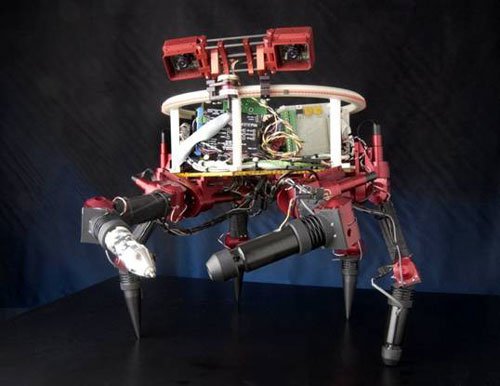
As the volume and complexity of human activity in space increases, the high risk and high cost of human Extra-Vehicular Activity (EVA) will argue for a range of robotic assistants for astronauts. By relieving astronauts of the more time consuming or mundane activities, these robotic archetypes increase the safety and productivity of various EVA operations. Specific technologies needed for such robots include the development of the hardware and algorithms necessary for locomotion in an environment like the International Space Station (ISS), which is characterized by a trusswork and rail substrate in micro-gravity. However the optimal number and types of archetype robots must be established and the proper extents of the individual archetypes must be explored.
Over the four years of this Technology Maturation Program project, JPL will develop a small-scale dexterous archetype initially based on the existing Limbed Excursion Mobile Utility Robot (LEMUR II) platform. This robot is a 10kg-class robot with 6 high-dexterity limbs that have been explicitly designed to accommodate both mobility and manipulation. In addition, the limbs have been designed to accommodate a quick-connect modular toolset for additional operational flexibility.
JPL has a co-investigation role for this work, which is led by Chris Culvert of the
Johnson Space Center.
People on this Task
Neil Abcouwer
Michael Garrett
Avi Okon
Julie Townsend


